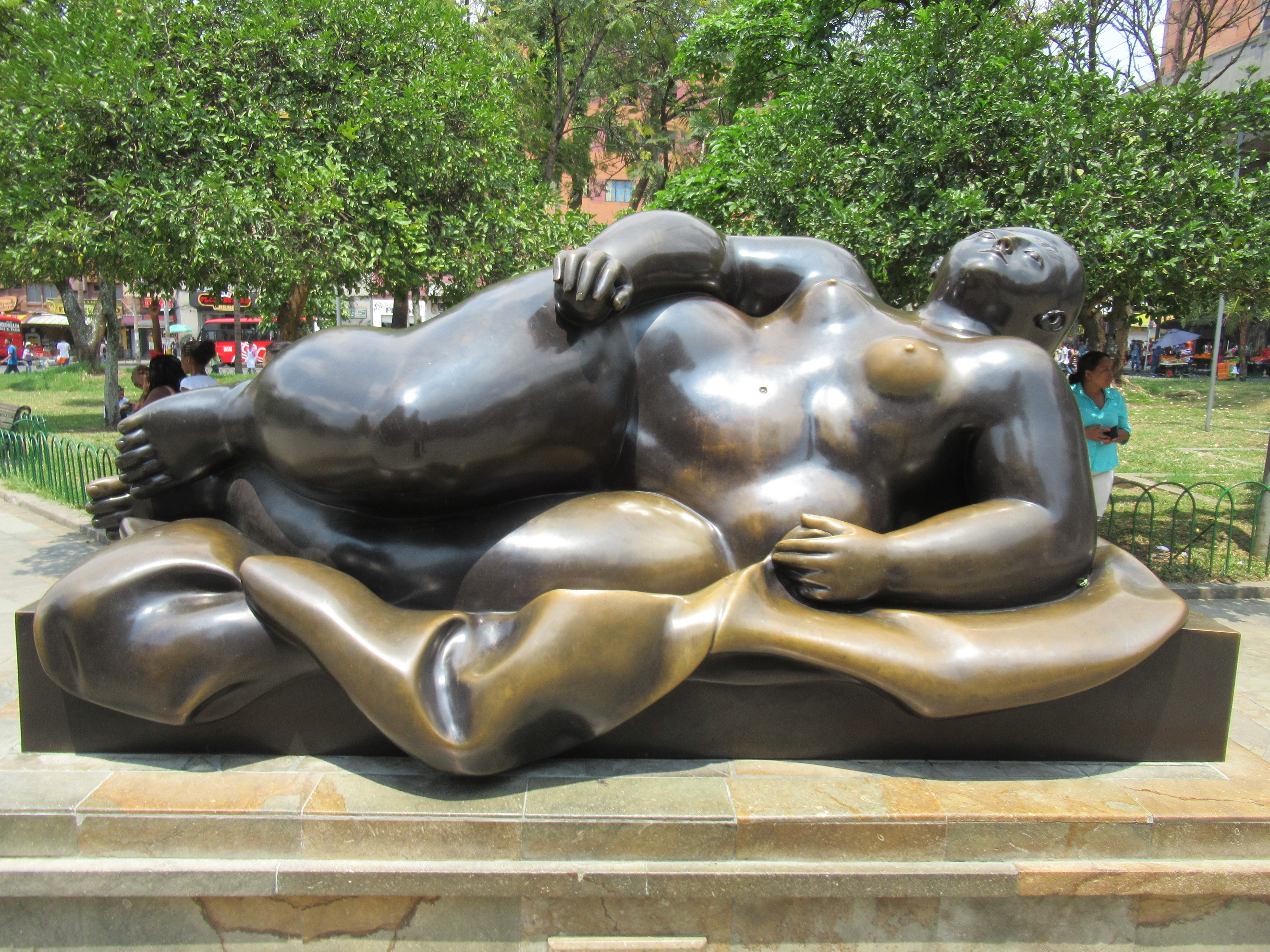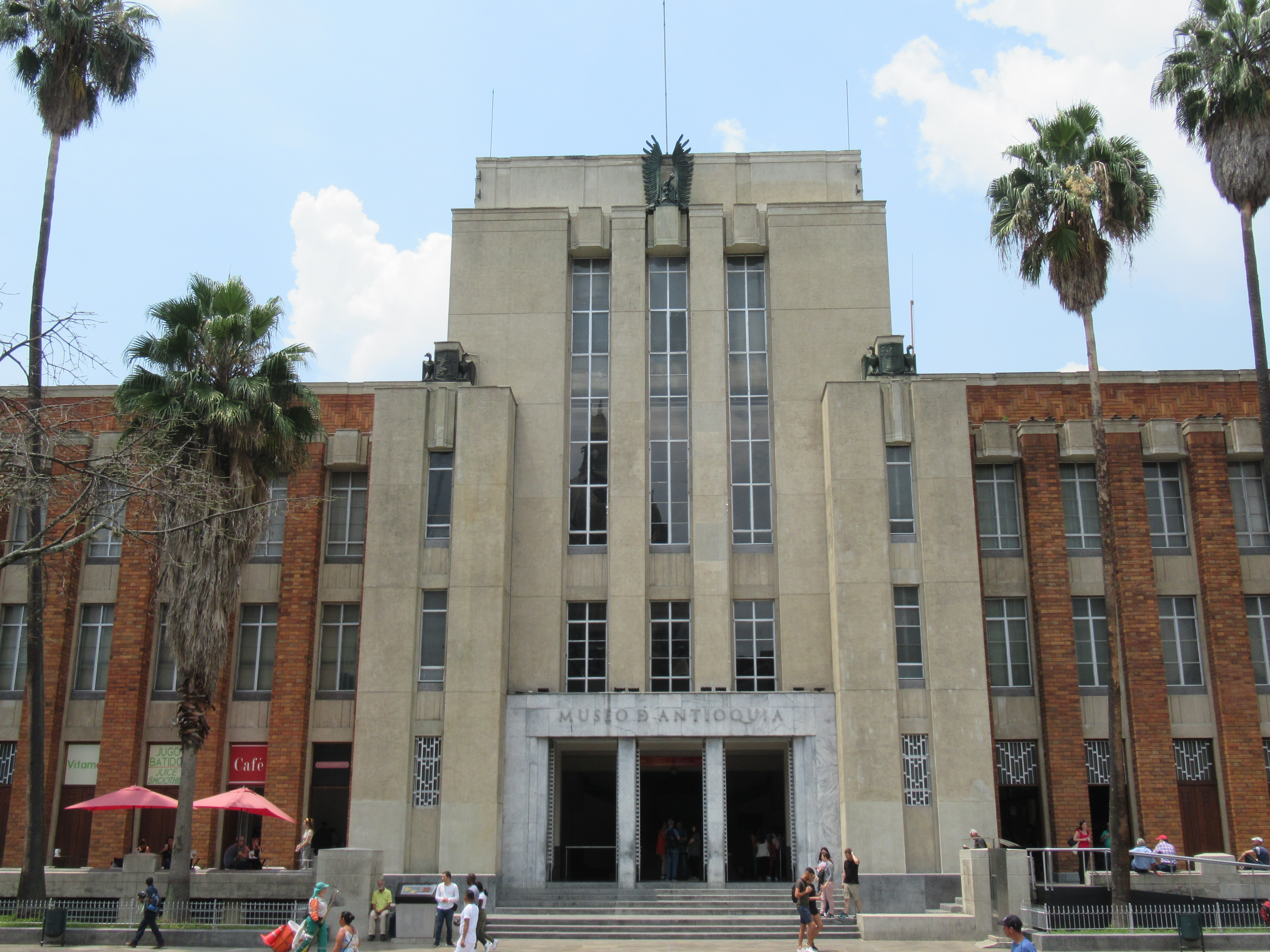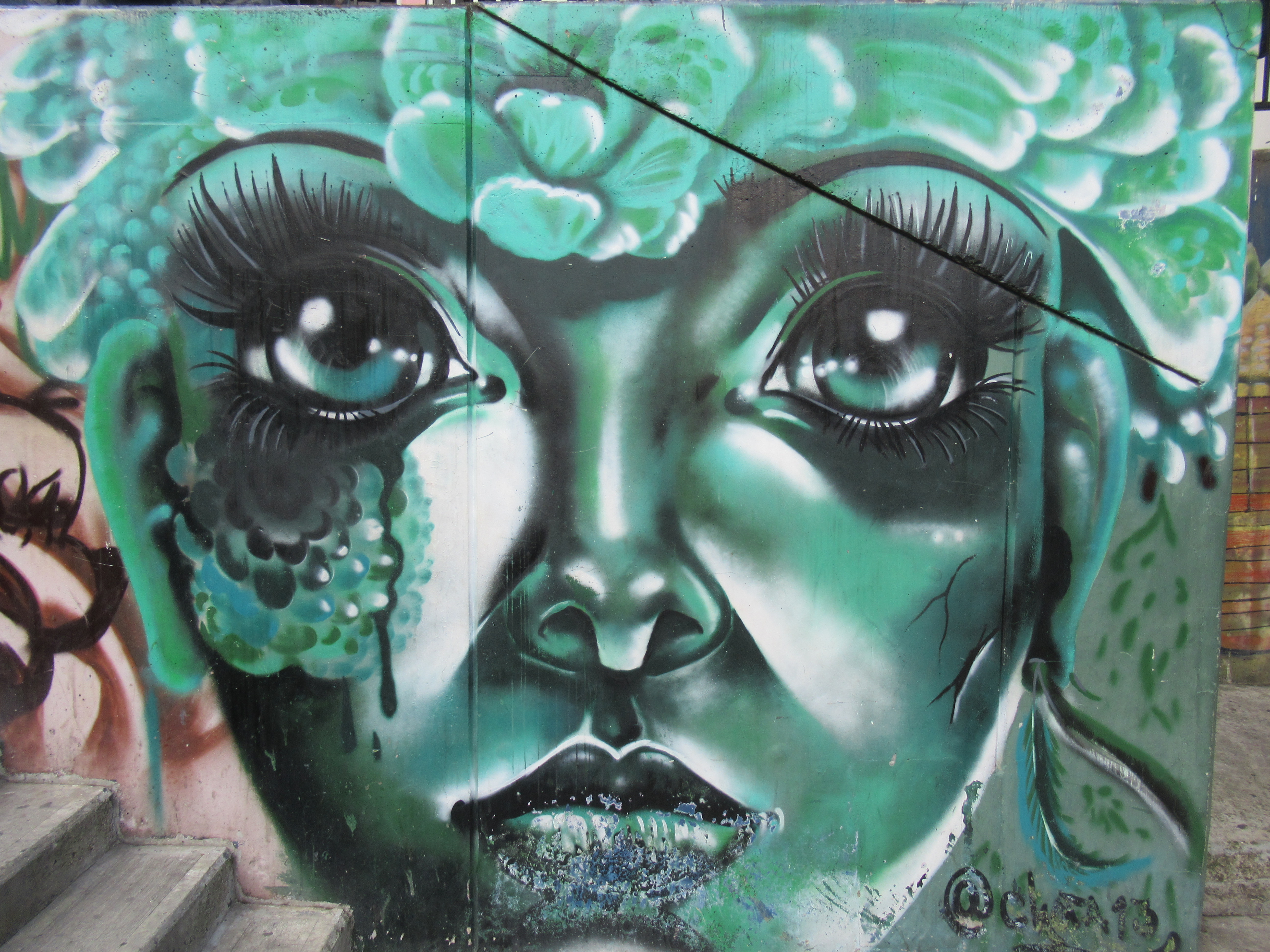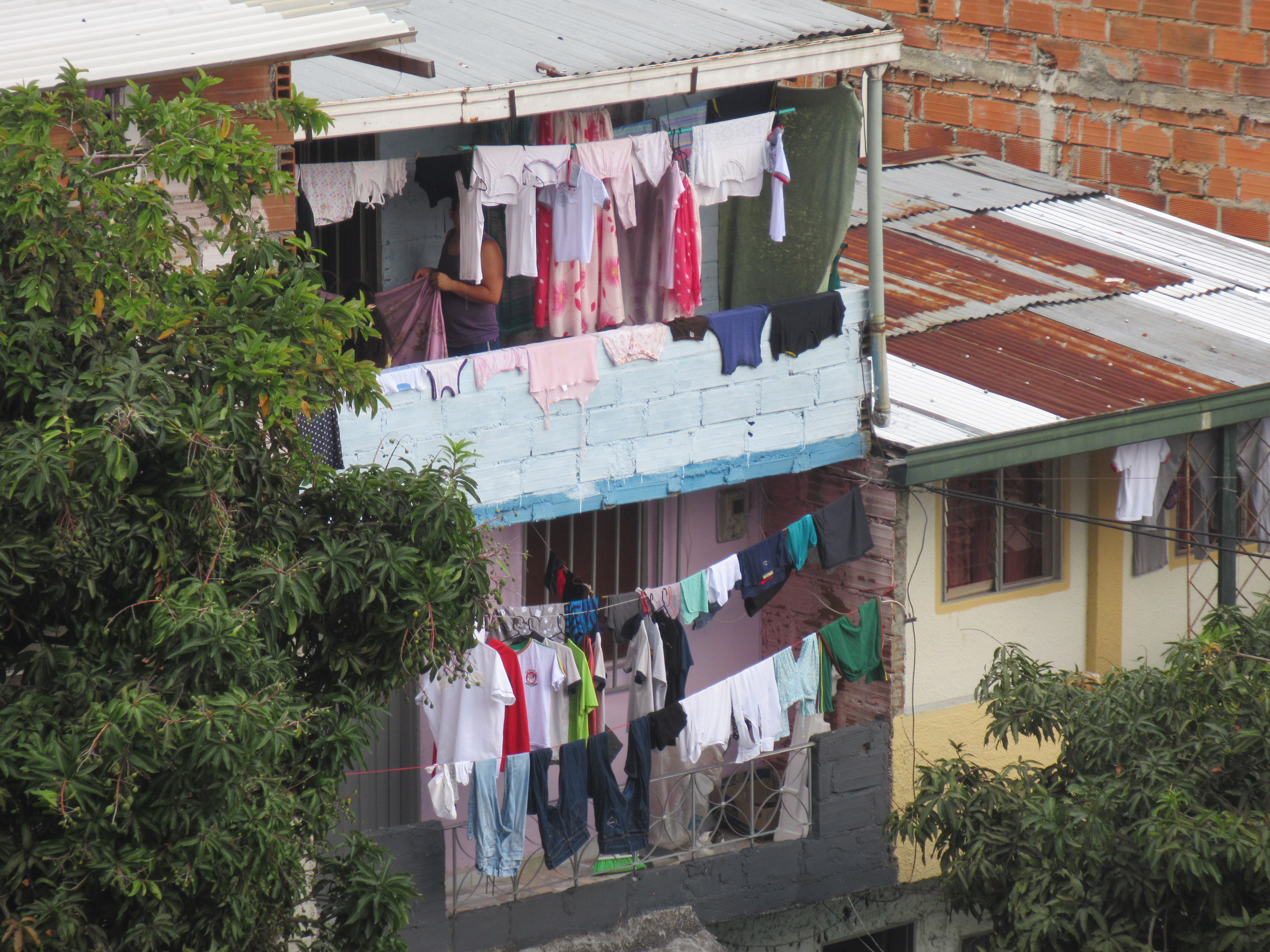Sunday, 24 February 2019
Medellin, Colombia
Medellin. Famous for Pablo Escobar and the Medellin Drug Cartel. Was due to visit the area where his house is but the authorities demolished it only two days ago, on Friday. It’s to become a memorial park for all those that were killed by him and his cartel over the years.
Since the early 2000s, Medellin has undergone something of a transformation from drug cartel and FARC guerrilla controlled favelas to now being much safer and becoming a tourist attraction. The first area to attract regeneration was the Santo Domingo Savio by the construction of a cable car from the river valley, at 1,500m up to the top of the mountain at 2,500m. The cable car enabled the locals to travel from the favela, which clings to the side of the mountain, to the city centre in the valley below to find work. Even so, the dwellings are still a mix of basic brick structures and wooden shacks. The cable car runs further to the top of the mountain and then across the top of the mountain for about 11km to the Arvi Park. Now an outdoor activity area which includes a farmers’ market. Plenty of small farms, or fincas, dotted around the mountain top and they now sell their wares at the regular market including various food stuffs, vegetables and plenty of fresh fruit.
On the return journey, stop off at Santo Domingo station and have a walk around the streets. Feels safe, despite two young lads starting a fight a few yards away, until a girlfriend steps in. It’s the usual argy bargy and pushing and shoving. Great views over the city below from the view point but wary of a young lad hovering about very close to us. He’s touting for business and wants to tell us the local history. For a fee. Obviously. His offer isn’t taken up. Plenty of street sellers and this is the real local habitat with not many tourists stopping off here. We’ll see the tourists later this afternoon.
Modern train runs along the river to take us to Parque Berrio in the city centre. This is the main park in Medellin and named after Berrio, a local politician and industrialist who contributed so much to Medellin’s development. It’s normal for the main park in a Colombian town to be named after Bolivar but Medellin is the exception. Bolivar Square is the second square of the city. Parque Berrio is a favourite meeting place for the older generation and there’s lots of people with flasks for selling coffee to those meeting up. Walking through the streets of downtown feels safe and there’s lots of 1970s architecture which was built as part of Medellin’s redevelopment. Trouble is they demolished the old 1920s and 30s mansions to make way for the new city centre. Guide tells me that he has black and white photographs of his grandmother all dressed up in her finery as a young lady with long gloves and fancy dress and hat taking afternoon tea in one of the old cafes that used to line one of the streets we walk along, which is now has bog standard shops.
In one corner of Bolivar Square, one old private house remains and it must have been quite an upmarket area to have had all these private houses lining the square, at the end of which stands the largest brick built cathedral in the world. Apparently.
Returning to the main station, walk through Botero Square. For those that take an active interest in these blogs, and have a good memory, you will recall that I visited the Botero museum in Bogota a few days ago. Botero being a famous Colombian artist who caricatures large sized people. Well. Botero Square houses about 20 or so large Botero bronze sculptures. They’re everywhere.
Excellent lunch and discover guide is an avid Top Gear and Grand Tour fan (car shows on BBC and Amazon with Jeremy Clarkson and co). The Grand Tour has just broadcast a Colombia special (which is worth watching for the stunning scenery even if you don’t like cars or Clarkson) and am told that the scene with the donkey is real. There actually is an area in Colombia where the local men like having sex with a donkey.
Very interesting afternoon as we enter Comuna 13. Comuna meaning neighbourhood and one of 16 in Medellin. This was one of the most dangerous comunas in the city due to its strategic location in the west of the city which is the main supply route into Medellin for drugs, guns and whatever. As recently as 5 years ago, you would not come here. But it started to change in 2011. The city built a series of ‘electric stairs’, or as we know them, escalators, travelling about 380m up the mountainside. Like the cable car on the other side of the valley, the escalators enabled the area to be regenerated and allowed locals to travel easily to the city below. Local artists have now painted large murals on the walls to brighten the place up and chart the transformation.
Back in the day, the comuna was held by FARC guerrillas and it’s easy to see how as the whole favela is a rabbit warren of narrow alleyways and steps. Over the years the government tried to raid the area and on the 21st attempt, Operation Orion was successful. Plenty of street fighting between the left wing FARC, the right wing paramilitaries and the government. The paramilitaries were set up more as private security force by wealthy people who wanted protecting from FARC guerrillas and the drug cartels so were on the government side in trying to eradicate FARC from the area. Inevitably in such confined spaces, there were many innocent locals killed in the cross fire.
The amount of tourists visiting is staggering but it has brought plenty of benefits to the local community and many restuarants, cafes, bars and shops have opened up creating greater wealth for the comuna. Great atmosphere as we travel up the escalators which pass by people’s windows. The proximity reminds me of the Central-Mid-Levels escalators in Hong Kong I went up in 1995.
One of the local artists is Chota who has painted a large mural with a hand throwing dice at some houses. It represents the hand of government coming in to the comuna and shooting willy nilly so anyone caught in the cross fire who died was all down to the throw of the dice. Sort of thing.
Once at the top of the escalators, a concrete pathway runs along the side of the mountainside to further enable locals to easily access the escalators. One of the houses still has bullet holes in its walls. A remnant of the battle that took place. And am told that as recently as two weeks ago, another house was riddled with bullet holes following a gun fight between two local gangs because of turf wars.
Instead of returning by the escalators, am asked if I would like to go off-piste and make our way through the alleyways back down. Well off the tourist trail. This is more my sort of thing. Bit of urban exploring.
The narrow alleyways and stairs create a rabbit warren and it’s easy to see how difficult it would have been to re-take the area in battle. Fascinating insight into people’s lives. Very densely populated area with lots of small brick built dwellings. On the odd occasion an open door permits peering into the property you discover a single room acting as kitchen, lounge and bedroom. Though there are some slightly larger dwelling which appear to have separate rooms. One particular dwelling has its door open. Three old ladies sit on a couch watching TV. A small kitchen and a bed at either end of the room. They wave back and shout hello in response. A small sign on the door offers fresh mango juice for sale.
This is their life.
Continuing down the stairs and through the alleyways, stop to chat with a bloke sweeping the path. He’s Orlando, a former community leader before retiring from the post. Having lived here since 1984, he’s seen, and heard, it all. Now the guerrillas have left, he helped to shape the comuna and the regeneration that took place. He takes us up a few levels to a derelict adobe dwelling. It’s roof missing and now used as a dumping ground for sacks of rubble it used to be a local’s house. One day FARC turned up, interrogated him and shot him. Assume he was an informant. His wife was hiding in the level below and eventually escaped, leaving the house empty.
Now vacant, FARC took possession and used it as torture chamber.
And all this within the past 20 years.
It’s reported that over 400 people ‘disappeared’ from the comuna during the FARC period.
To stand here today outside a torture chamber shows how much the city, and Colombia as a whole for that matter, has changed in such a short amount of time.













































